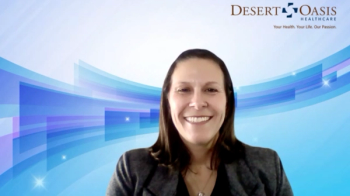
Contributor: 3 Technologies to Support Health Plans Post COVID-19
Health insurance companies are anticipating a swell in pent-up demand for delayed or forgone health services in 2020, as well as increased costs associated with distributing COVID-19 vaccines to millions of Americans. To offset the potentially precarious business impact caused by these converging factors, insurers are turning to technology for help.
For the first time in recorded history, health care spending dropped in 2020. This has been attributed to the decline in non–COVID-19 medical care, as many people
But uncertainty looms for 2021 as the pandemic recedes. Health insurance companies are anticipating a swell in pent-up demand for delayed or forgone health services in 2020, as well as increased costs associated with distributing COVID-19 vaccines to millions of Americans. To offset the potentially precarious business impact caused by these converging factors, insurers are turning to technology for help.
What’s Changed?
Health insurance companies have generally take a retrospective view of the last year to make strategic decisions about their business moving forward. However, looking at last year with some of their same algorithms is not a good proxy for 2021 plans. A major consequence of delayed or decreased use of health care services is the lack of data necessary for analytics that help payers predict future care requirements, including expanded interventions for disease management.
Fortunately, technology has emerged that can take a deeper dive into all corners of a member’s medical chart and go back more than a year to improve the process of finding real insights around disease and health to ensure the right care can be delivered at the right time.
In today’s uncertain landscape, payers need to leverage the latest
1. Natural Language Processing (NLP)
Payers have extracted as much value from a claim as they can, and now they're thirsting for more clinical insights. A patient’s medical chart is a virtual goldmine of data, but that data are often locked in an unstructured form. Experts estimate that as much as 80% of all health care data is unstructured.
Fortunately, NLP technology can scan records and identify clinically relevant information—such as conditions, medications, procedures, allergies, and lab results—so payers can quickly and accurately identify gaps in care and intervene to improve outcomes at a lower cost. Further, clinically tuned NLP technology can codify extracted data to industry standards so the information can not only be unlocked, but also shared and understood by all stakeholders.
2. Next-Generation Analytics Engines
Legacy systems in use at most insurance organizations are built to be transactional and not designed for analytics purposes. These systems pose major challenges to what payers are increasingly focused on today. Although payers have only recently started receiving clinical data and are still in the early stages of learning how to apply the clinical insights to improve outcomes, the ability to leverage both claims data and clinical data, structured and unstructured, is essential to develop a comprehensive view of an individual’s health.
This view can help inform care decisions, as well as be used to perform more accurate risk adjustment, report on quality measures, and empower analytics models about patient populations.
3. Data Normalization
To put clinical and claims data like labs, medications, allergies, problems, diagnoses, and procedures to work, it must be normalized so common meaning can be derived by different stakeholders. This is especially important as insurers increasingly exchange data with providers to streamline and improve care for patients.
Insurers would be wise to leverage technology that can map disparate clinical and claims data to the most appropriate standard codes, leveraging advanced terminology tools, and finely tuned matching algorithms powered by machine learning.
Conclusion
It is an uncertain but also exciting time in health care, with the rapid expansion of data and technological advancements that will allow insurers to uncover and leverage important insights like never before.
Newsletter
Stay ahead of policy, cost, and value—subscribe to AJMC for expert insights at the intersection of clinical care and health economics.

















































